Introduction
Recovery from addiction is a complex journey that extends beyond mere abstinence from substances. It involves recognizing and managing various risky behaviors that can jeopardize one’s progress. Understanding these behaviors, identifying high-risk situations, and developing effective coping strategies are crucial steps towards a successful recovery. This article delves into the multifaceted aspects of risky behaviors in recovery, providing insights and strategies to support individuals on their path to sustained sobriety.
Understanding Risky Behaviors in Recovery
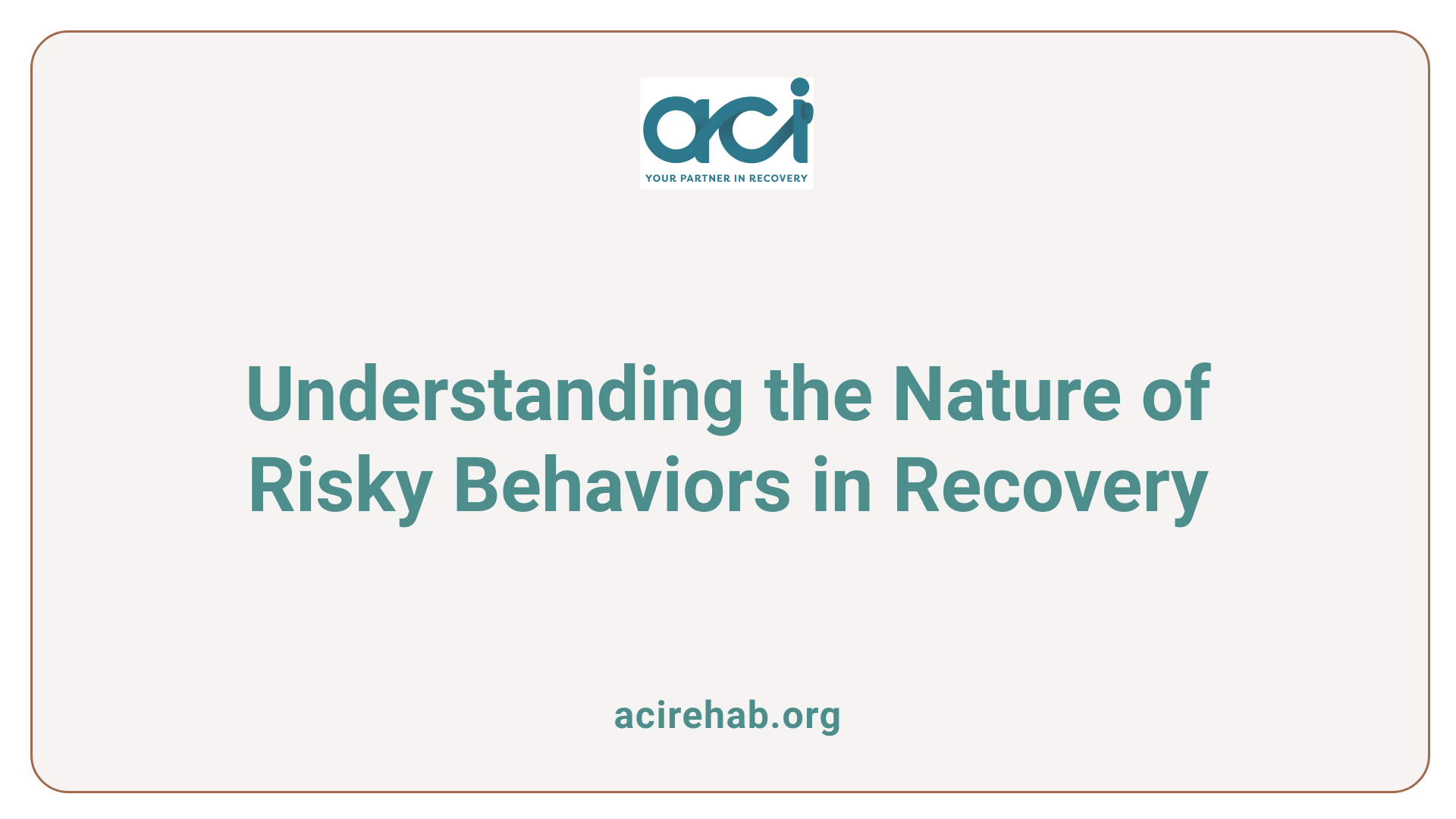
Definition of Risky Behaviors
Risky behaviors encompass actions that jeopardize an individual’s recovery or overall well-being. This often includes activities linked to substance use or addiction, like the decision to consume alcohol or drugs, which can lead to a cycle of dependency and relapse. These behaviors frequently stem from impulsivity or a momentary lapse in judgment, highlighting the importance of mindfulness in recovery efforts.
Impact on the Recovery Process
Engaging in risky behaviors can severely disrupt the recovery process. They can lead to emotional distress, hinder progress, and increase the likelihood of relapse. Such behaviors may manifest in various forms, ranging from neglecting self-care to isolating oneself or socializing with people who consume substances. The consequences are vast and may include strained relationships, decreased job performance, and even legal troubles. Recognizing and addressing these behaviors is crucial for sustaining long-term sobriety.
Examples of Risky Behaviors
Common examples of risky behaviors during recovery include:
- Driving Under the Influence (DUI): Poses severe dangers not only to the individual but also to others on the road.
- Unprotected Sex: Increases the likelihood of sexually transmitted infections and unplanned pregnancies.
- Gambling: Engages the brain’s reward system, leading to compulsive behaviors similar to those associated with substance use.
- Revisiting Past Drug-Use Locations: Such environments can trigger cravings and emotional distress, making recovery more challenging.
- Reckless Financial Decisions: Utilizing leftover money recklessly can create scenarios leading back to substance use or legal issues.
Addressing these behaviors through support networks and coping strategies is vital for maintaining a successful recovery journey.
High-Risk Situations and Triggers
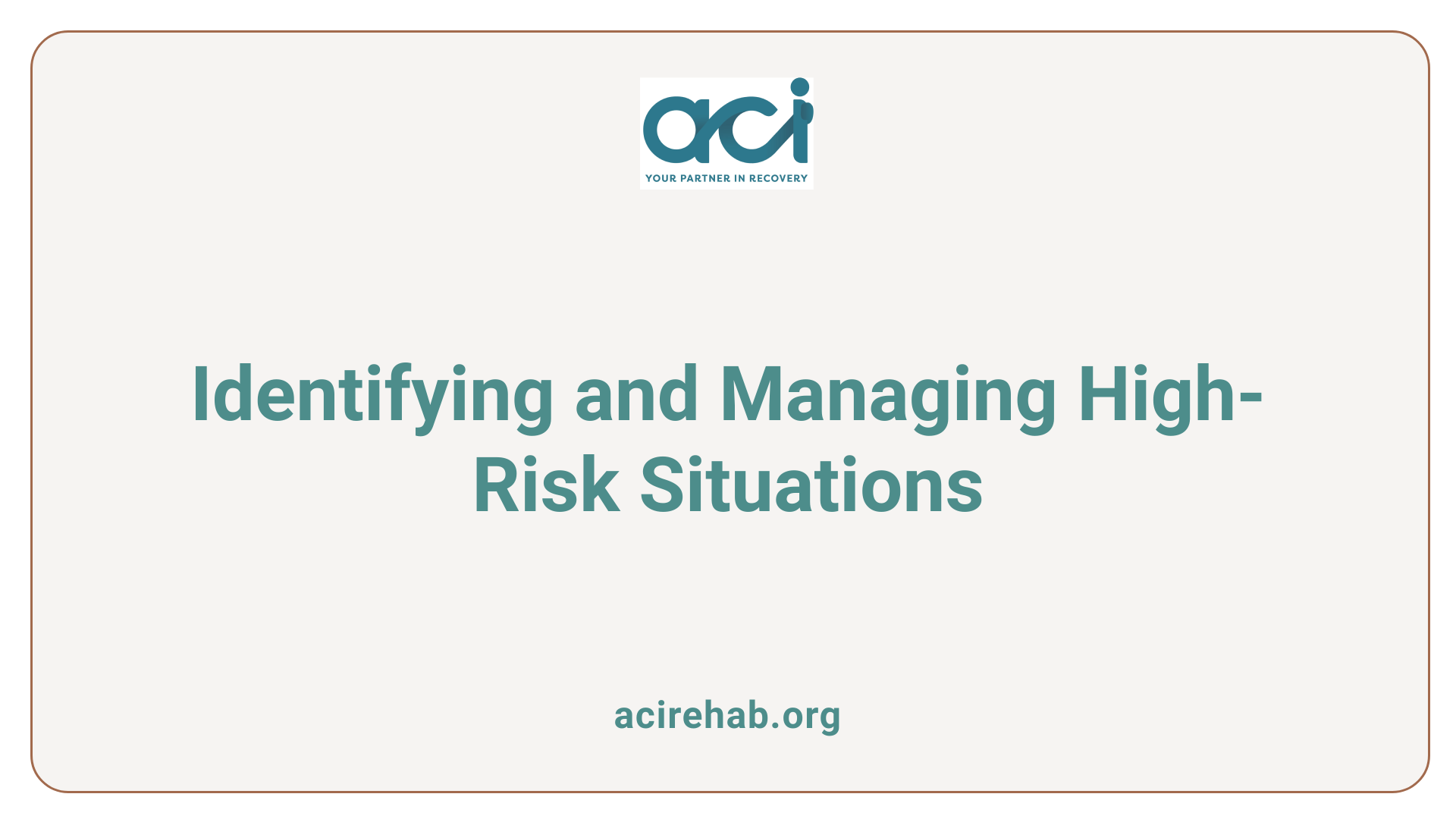
What are high-risk situations in recovery?
High-risk situations in recovery are moments or environments that significantly increase the likelihood of relapse. These situations often arise during periods of heightened stress or negative emotions, such as anger, anxiety, or even boredom. Being around others who engage in substance use—like drinking or smoking—greatly heightens the risk of relapse; even a single encounter with such influences can trigger a relapse.
Examples of triggers
Common triggers may include:
- Interpersonal conflicts: Arguments or unresolved issues can evoke emotional distress, prompting thoughts of substance use as a coping mechanism.
- Social pressure: Gathering with friends or acquaintances who use substances can create immense temptation, especially in environments where substance use is normalized.
- Locations associated with past use: Visiting places where individuals previously used substances can evoke strong cravings, leading them to relive past experiences.
- Emotional states: Both negative emotional states (like sadness or stress) and even positive moments (like joy or celebration) can act as triggers.
Impact on relapse
The impact of high-risk situations is profound, as they can easily derail recovery efforts. Negative emotional states can increase vulnerability, while the temptation to use substances during moments of celebration can create a false sense of control. It is crucial for individuals in recovery to recognize these high-risk situations and develop effective coping strategies. Building a robust support network, practicing self-care, and having a detailed relapse prevention plan is essential to navigate these triggers and maintain sobriety.
Coping Strategies to Manage Risks in Recovery
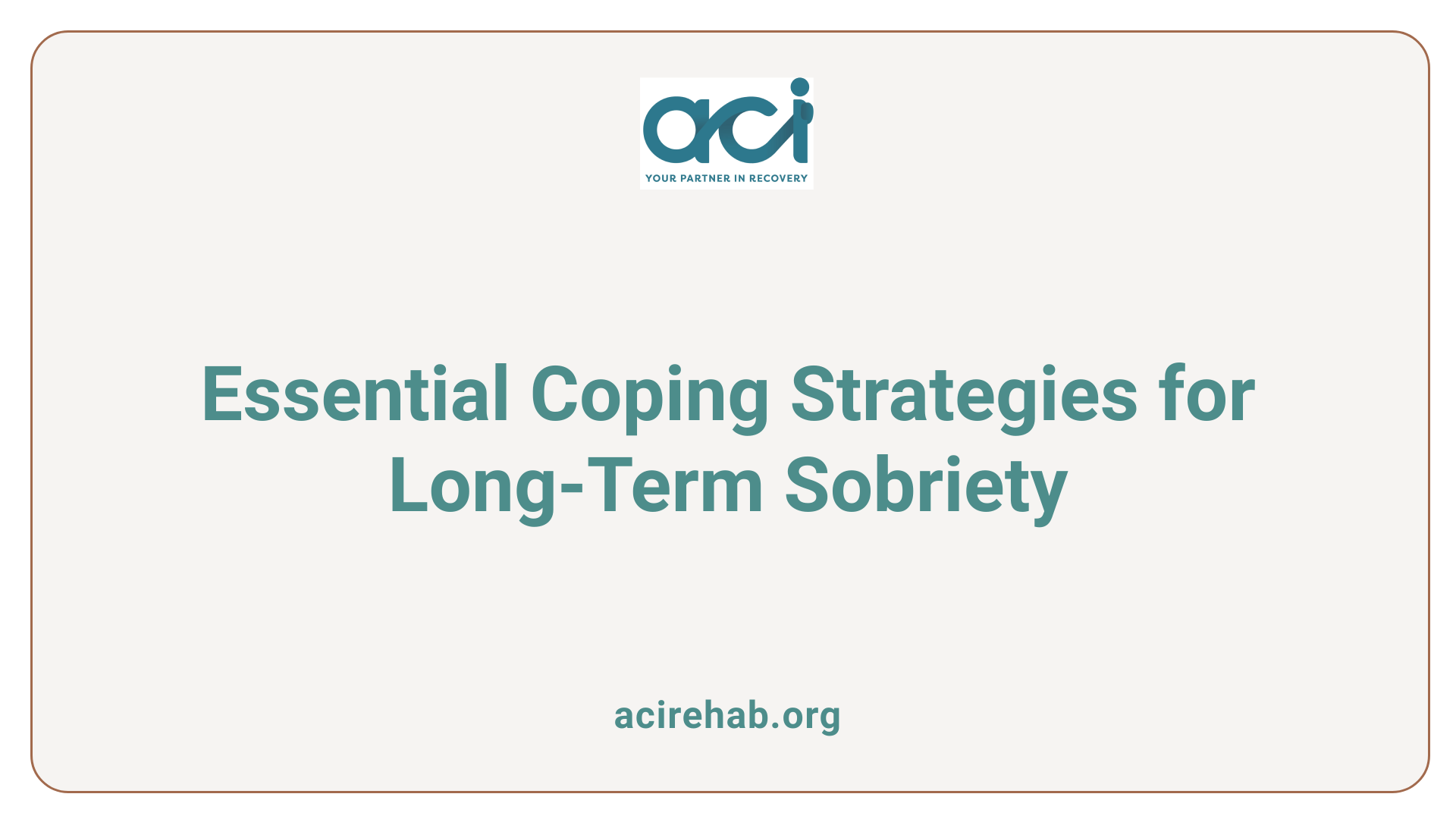
Why Are Coping Strategies Important?
Coping strategies play a vital role in recovery by equipping individuals with the tools needed to face triggers and high-risk situations. They help manage emotions and reduce the risk of relapse, fostering long-term sobriety. Developing effective strategies can provide individuals with a greater sense of control over their recovery journey.
What Are Some Effective Coping Mechanisms?
Common coping mechanisms that individuals in recovery may adopt include:
- Awareness of Triggers: Identifying personal and external triggers is essential. For instance, environments or situations tied to past substance use can pose significant risks.
- Relapse Prevention Plans: Creating a detailed plan helps outline specific steps to maintain sobriety, allowing individuals to prepare for potential setbacks.
- Mindfulness and Self-Care Practices: Engaging in activities such as meditation, yoga, or exercise can promote well-being and mitigate stress, which is critical for maintaining a healthy mindset.
- Seeking Professional Help: Regular therapy or counseling can facilitate open dialogue about fears and challenges, aiding individuals in recognizing and addressing harmful thought patterns.
How Does a Support System Help?
Building a strong support system is crucial in recovery. Friends, family, mentors, and support groups provide essential encouragement and accountability. Communicating fears and anxieties with trusted individuals can alleviate feelings of isolation and empower individuals to make healthier choices. Support groups, such as Alcoholics Anonymous (AA), also offer a collective understanding of the recovery process, reinforcing the notion that one is not alone in their struggles.
By integrating these coping strategies, individuals can better navigate the complex challenges of recovery, reducing the likelihood of engaging in risky behaviors and optimizing their journey toward sobriety.
Psychological and Social Aspects of Risky Decision-Making
Psychological Drivers of Risky Behavior
Risky behaviors during recovery can often stem from underlying psychological factors. Impulsivity is common among individuals with substance use disorders, particularly when they face negative emotions such as boredom, stress, or anxiety. This impulsivity can cloud judgment, making individuals more likely to engage in behaviors that jeopardize their recovery. Conditions like PTSD can exacerbate these tendencies, increasing the likelihood of risky decisions when emotions run high.
Social Influences
Social pressures also play a significant role in influencing risky behaviors. Engaging with peers who use substances or participate in risky activities can create a challenging environment for maintaining sobriety. Young adults, particularly those aged 19-29, are more susceptible to these social influences due to the ongoing development of impulse control in the brain. Gender also contributes to these trends, as men may be more inclined to risk-taking behaviors due to societal expectations and biological factors.
Impact on Decision-Making in Recovery
The interplay between these psychological and social elements forms a complex landscape for decision-making in recovery. Individuals may find themselves rationalizing risky actions or underestimating the power of triggers present in their environment, leading to potential relapse. Building awareness of these risks and establishing a strong support network can empower individuals to manage their responses, thereby improving their recovery journey.
Impact of Age, Gender, and Mental Health on Risky Behaviors
How do age, gender, and mental health impact risky behaviors in recovery?
Age, gender, and mental health significantly influence the propensity for risky behaviors during recovery. Young adults, particularly those aged 19 to 29, are more susceptible to impulsive actions due to ongoing brain development, especially in areas responsible for decision-making and impulse control. This group often engages in higher levels of risk-taking behaviors, which can jeopardize their recovery.
Gender differences in engaging in risky behaviors
Research has shown that men are generally more inclined to partake in risky behaviors compared to women. Biological factors, such as higher testosterone levels, combined with societal norms related to masculinity, contribute to this trend. On the other hand, women may face distinct challenges in recovery, including higher rates of co-occurring mental health disorders such as anxiety and depression, which complicate their recovery journey.
Role of mental health conditions
Mental health conditions, including PTSD, play a critical role in exacerbating risky behavior during recovery. Individuals with PTSD often experience heightened impulsivity and risk-taking, especially in negative emotional states. Thus, integrated treatment approaches that address both substance use and mental health concerns are crucial, improving the chances for long-term recovery success. Understanding the interactions between these factors can be pivotal in tailoring effective recovery strategies.
The Role of a Robust Support System
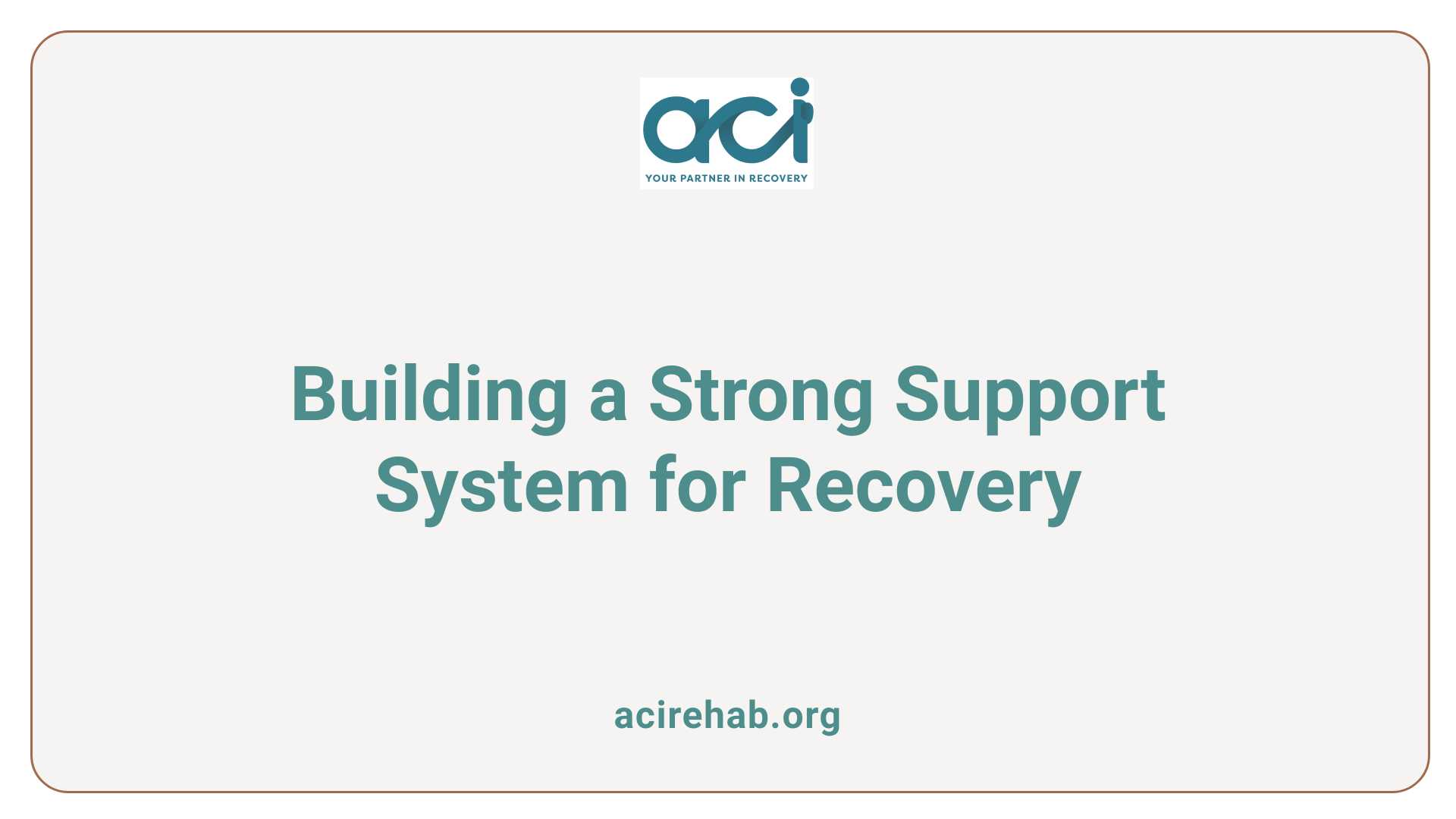
Importance of support systems in recovery
Recovery from substance use disorders often becomes a challenging journey filled with potential pitfalls. One of the most effective ways to navigate this path is through the establishment of a strong support system. Support networks help individuals manage high-risk situations, mitigate impulsive behaviors, and maintain sobriety by fostering a sense of accountability and encouragement. Individuals who have supportive communities are more likely to stay committed to recovery efforts as they feel understood and valued.
Examples of support systems
Support systems can take various forms, including:
- Family and Friends: Trusted loved ones can provide emotional support and hold individuals accountable.
- Mentorship: A sponsor can offer guidance based on personal recovery experiences.
- Support Groups: Organizations such as Alcoholics Anonymous (AA) or Narcotics Anonymous (NA) provide community interaction where members can share stories and coping strategies.
Community and professional guidance
Seeking professional help from therapists or addiction counselors is paramount, especially when faced with high-risk scenarios. They can offer tailored coping strategies and relapse prevention plans. Moreover, engaging in community resources connects individuals with others who share similar experiences, further strengthening their recovery journey. This blend of personal and professional support creates a resilient framework for achieving long-term sobriety.
Educational Resources for Preventing Relapse
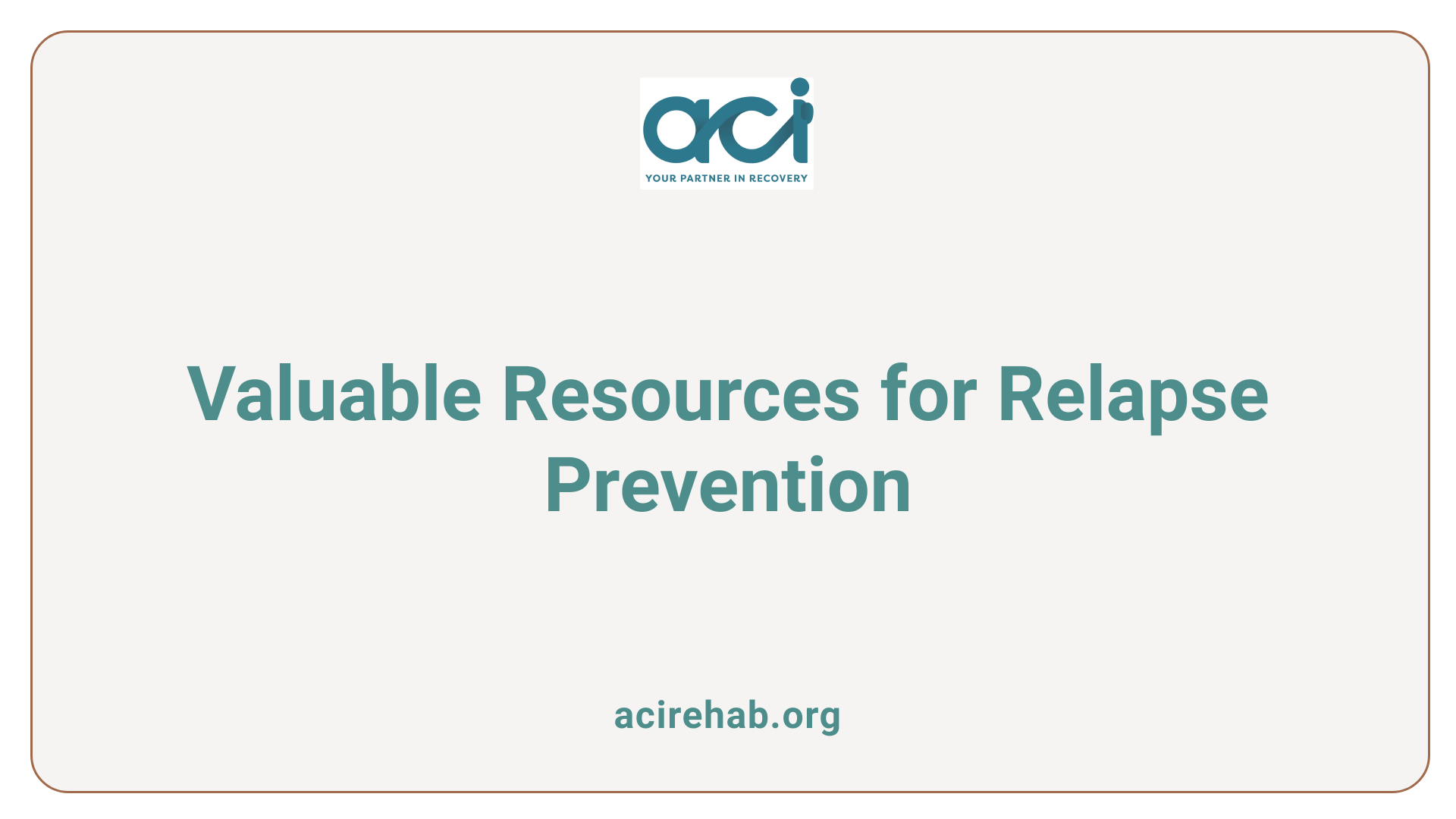
Guidance and resources available
Recovery from addiction is a complex journey that often requires ongoing education and support. Numerous organizations provide resources and information designed to assist individuals in recovery. These may include pamphlets, workshops, and online courses that cover various aspects of addiction and recovery strategies. Local support groups, like Alcoholics Anonymous (AA) and Narcotics Anonymous (NA), are vital in providing both education and community engagement.
Importance of education in recovery
Education plays a crucial role in preventing relapse. Understanding triggers, consequences of risky behaviors, and emotional states that can lead to relapse helps individuals make informed decisions. Knowledge empowers recovering addicts to anticipate challenges and develop effective coping strategies, such as identifying high-risk situations and practicing self-care techniques.
Community resources
Community resources are abundant and can significantly enhance recovery processes. Many regions have local treatment centers offering workshops and counseling services tailored to recovery needs. Additionally, connecting with peers through supportive networks fosters accountability and encouragement, proving essential in maintaining sobriety.
Recognizing Warning Signs and Coping Strategies
Warning Signs of Relapse
Identifying early warning signs is vital for individuals in recovery. These can include internal cues like feelings of hunger, anger, loneliness, or tiredness, often referred to as HALT. External factors such as returning to places associated with substance use or encountering old friends who use can also serve as significant triggers. Recognizing these signs allows individuals to take proactive steps to mitigate risks associated with relapse.
Developing a Relapse Prevention Plan
Creating a detailed relapse prevention plan is essential for maintaining abstinence. This plan should outline personal triggers, coping strategies, and a roadmap for addressing high-risk situations. Individuals can improve their preparedness by assessing their environments and making conscious choices to avoid unnecessary risks. Engagement with a trusted support network provides accountability and encouragement during challenging times.
Coping Strategies for High-Risk Scenarios
Coping strategies play a crucial role in navigating high-risk situations. Key approaches include:
- Awareness of Triggers: Being mindful of situations that elicit cravings or impulsive behaviors.
- Building a Support Network: Surrounding oneself with supportive friends, family, or support groups that encourage sobriety.
- Practicing Self-Care: Engaging in activities that promote mental, physical, and emotional well-being, such as exercise, mindfulness, or creative outlets.
These strategies equip individuals with the tools they need to handle stress and minimize their exposure to high-risk behaviors, thereby supporting a successful recovery journey.
Addressing Risky Behaviors in Specific Populations
Focus on Youth and Adolescents
Younger adults, particularly those aged 19-29, represent a demographic particularly susceptible to risky behaviors that threaten recovery. This vulnerability stems from ongoing brain development, particularly in areas related to decision-making and impulse control. Furthermore, individuals in this age group may engage more frequently in impulsive decision-making, jeopardizing their recovery efforts.
Approaches for Addressing Risky Behaviors
To counteract these challenges, it’s essential to develop targeted strategies. Educational programs should include awareness about triggers and coping mechanisms. Enhancing skills in decision-making can help prevent seemingly irrelevant decisions (SID) that can escalate into high-risk situations. Programs must focus on building healthy outlets for stress, like exercise and creative activities, to replace risky behaviors.
Role of Family and Community
Family and community play crucial roles in safeguarding youth from risky behaviors. Open dialogues about substance use and healthy lifestyle choices can promote a supportive environment. Building a robust support system that includes family, mentors, and peer groups reinforces positive behavior and accountability, ultimately contributing to an individual’s recovery journey.
Conclusion
Understanding and addressing risky behaviors during recovery is crucial for long-term success and well-being. By recognizing high-risk situations, implementing coping strategies, and utilizing robust support systems, individuals can strengthen their commitment to a substance-free lifestyle. Continuous education and awareness are essential components in navigating the complex journey of recovery. With dedicated effort and the right resources, individuals can achieve sustained sobriety and build fulfilling, healthy lives.
References
- Watch Out for Risky Behavior in Recovery
- High-Risk Situations for Recovering Addicts
- Risky Behaviors in Recovery
- Risky Behaviors in Recovery
- [PDF] Preventing Relapse to Risky Behavior: Recovery as a Journey
- Risky Behaviors in Recovery
- [PDF] Module 8: Risky Thinking and Decision-Making | Mass.gov
- What Is Risky Behavior, and Can It Be Addicting? – GoodRx

